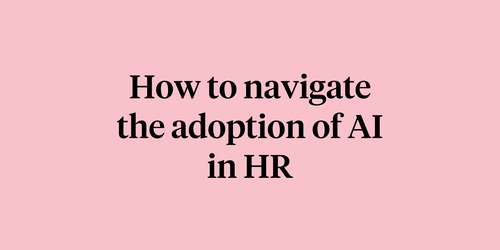
Looking at inclusion through the lens of exclusion

Written by

Director of People Science Research, Culture Amp
Diversity in the workplace is best achieved when people of all backgrounds also feel a sense of inclusion and belonging. Diversity is about the mix of different people at a company, whereas inclusion deals with whether or not people feel a sense of belonging, feel heard, and have a safe space to express themselves authentically.
When working to improve diversity, equity, and inclusion in the workplace, it can be helpful to identify why people feel excluded and what can happen to the mindset of people who are excluded over time.
In this article, based on a workshop facilitated by Rajkumari Neogy, founder of iBelong, we explore the five basic needs that affect feelings of inclusion, the four zones of exclusion, and how to break those mindsets.
Five basic needs that affect feelings of inclusion
We all have needs. Problems arise when we have a need that is unmet. Initially, an unmet need may be annoying, but it can be easily dismissed. Over time, however, unmet needs begin to cause bigger reactions, both consciously and unconsciously. When we have too many unmet needs, we can feel excluded.
Rajkumari presents five basic needs that, when met, make us feel included.
-
Integrity
Integrity is when what a person feels and what they express are congruent. When we live congruent to our values is when we have accountability. Accountability is the first step in allowing the conversation to move toward inclusion. -
Participation
When we experience others as warm and approachable, we become curious about them. When we are curious, we want to learn more and that leads directly to engagement. Knowing when to be reserved and when to engage is critical in inviting others to feel welcomed into any situation. This is a crucial tenet in building trust. -
Trust
The two behaviors of trust are withholding and transparency. There is an art to knowing when to listen or hold back, withhold or be transparent. Demonstrating mastery of this art builds trust. Demonstrating accountability by engaging others with integrity builds the foundation for trust. It is difficult to trust someone who doesn’t live congruently or discloses too much or too little. -
Connection
After establishing integrity, participation, and trust, establishing a connection is relatively easy. Cultivating a connection with others requires courage and patience but is critical in establishing inclusive communication. -
Support
When people are better connected to others as well as themselves, the desire to support each other becomes the default. Being supportive means going from fearful to generous, and seeking prosperity for others. People who provide support can cultivate a thriving culture that is essential to the health of the organization, team, and individual.
These needs are most effective when met sequentially in every aspect of our lives. If they aren’t met, we might feel excluded. Exclusion can be triggered in various ways, from someone simply using the cell phone while you’re having a conversation to noticing that someone didn’t say hello to you as they walked by. Ultimately, exclusion comes from some version of not feeling valued or welcomed.
The four zones of exclusion
If we go through a prolonged period of unmet needs, a new mindset can be developed. Rajkumari calls this the zone of exclusion. While these mindsets stem from being excluded, over time they lead the individual to exclude others.
The four zones of exclusion are:
- Neediness
- Victimhood
- Entitlement
- Righteousness
Each zone of exclusion stems from an unmet need and the feeling “I am not good enough.”
The zones begin with neediness and victimhood. Neediness stems from the philosophy that it is someone else’s job to meet your needs, and they are not fulfilling that need. Victimhood is a sense of powerlessness and a longing for acknowledgment. Being in either of these zones hurts, so much that we can see it register as physical pain in the brain.
Seeking to escape this pain results in us moving to other zones of exclusion – entitlement and righteousness. Entitlement and righteousness can be more difficult to understand because they are generally traits we associate with someone who is excluding others out of malicious intent or ignorance. In actuality, these mindsets stem from self-preservation following feelings of exclusion. These zones of exclusion manifest when we’ve been in the previous zones (neediness and victimhood) for too long.
Breaking the mindset of exclusion
In order to break the cycle and mindset of exclusion, we must become aware of our zones of exclusion. If you don’t break the cycle, those that have previously been excluded may continue to exclude others as a way to protect themselves.
Which zone of exclusion do you live in? We all have one, and we need to own it so we can eventually become more inclusive towards others. When you share your experience with the zone of exclusion in which you live, it opens up the conversation for other people to do so as well. Then, people can become aware of how they might be excluding others, oftentimes without even realizing it.
Understanding zones of exclusion to create inclusion
To create a truly inclusive environment, we should always seek to fully understand our zones of exclusion and how people want their needs met. As Rajkumari says, “You cannot feel fully included until you understand where you are actively excluding yourself and others.”
While we have the same basic needs, how we want those needs to be fulfilled is unique. That requires a constant commitment to building relationships and building trust through empathic communication. Inclusion is being personal in how we meet others' needs.


